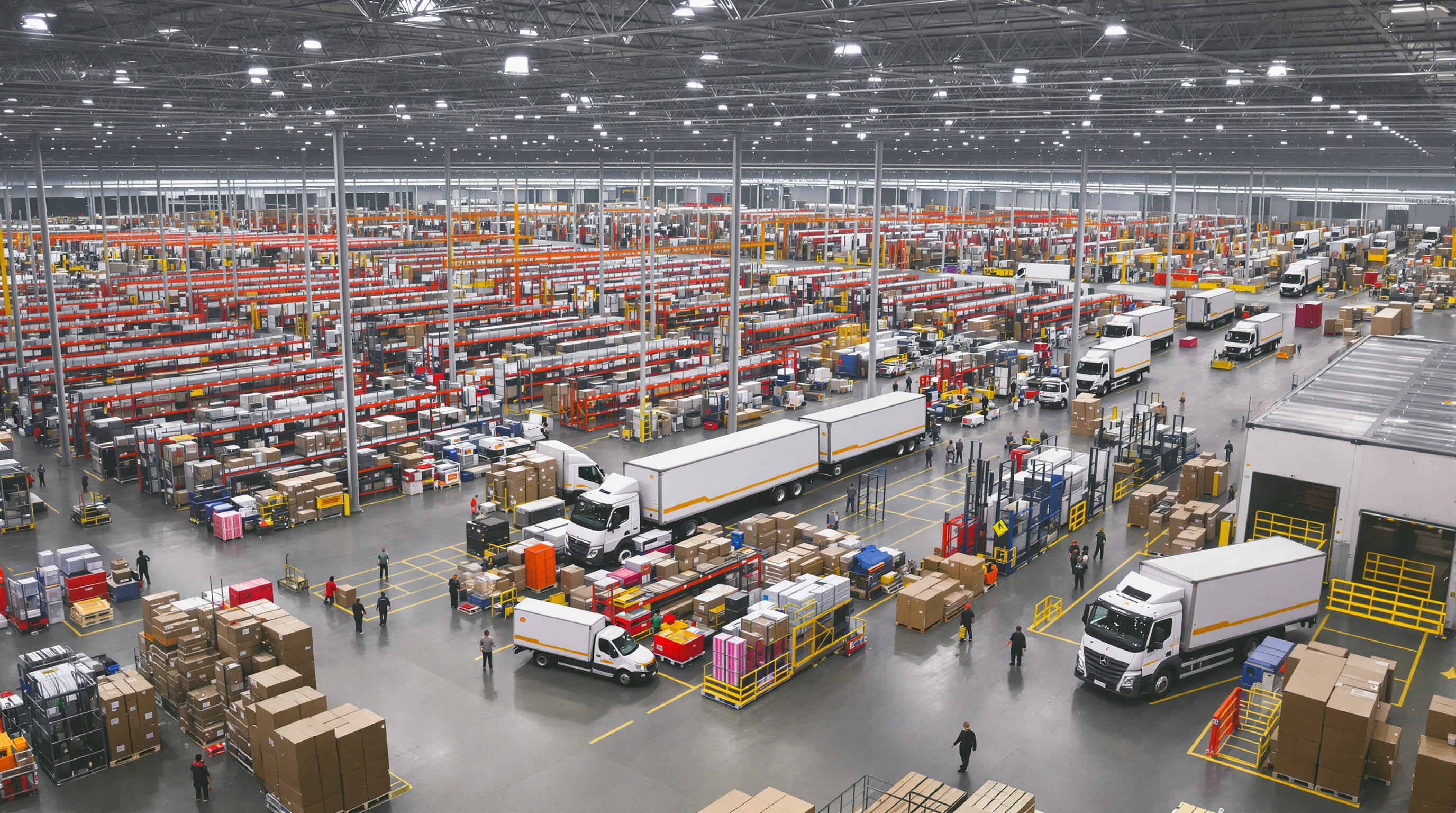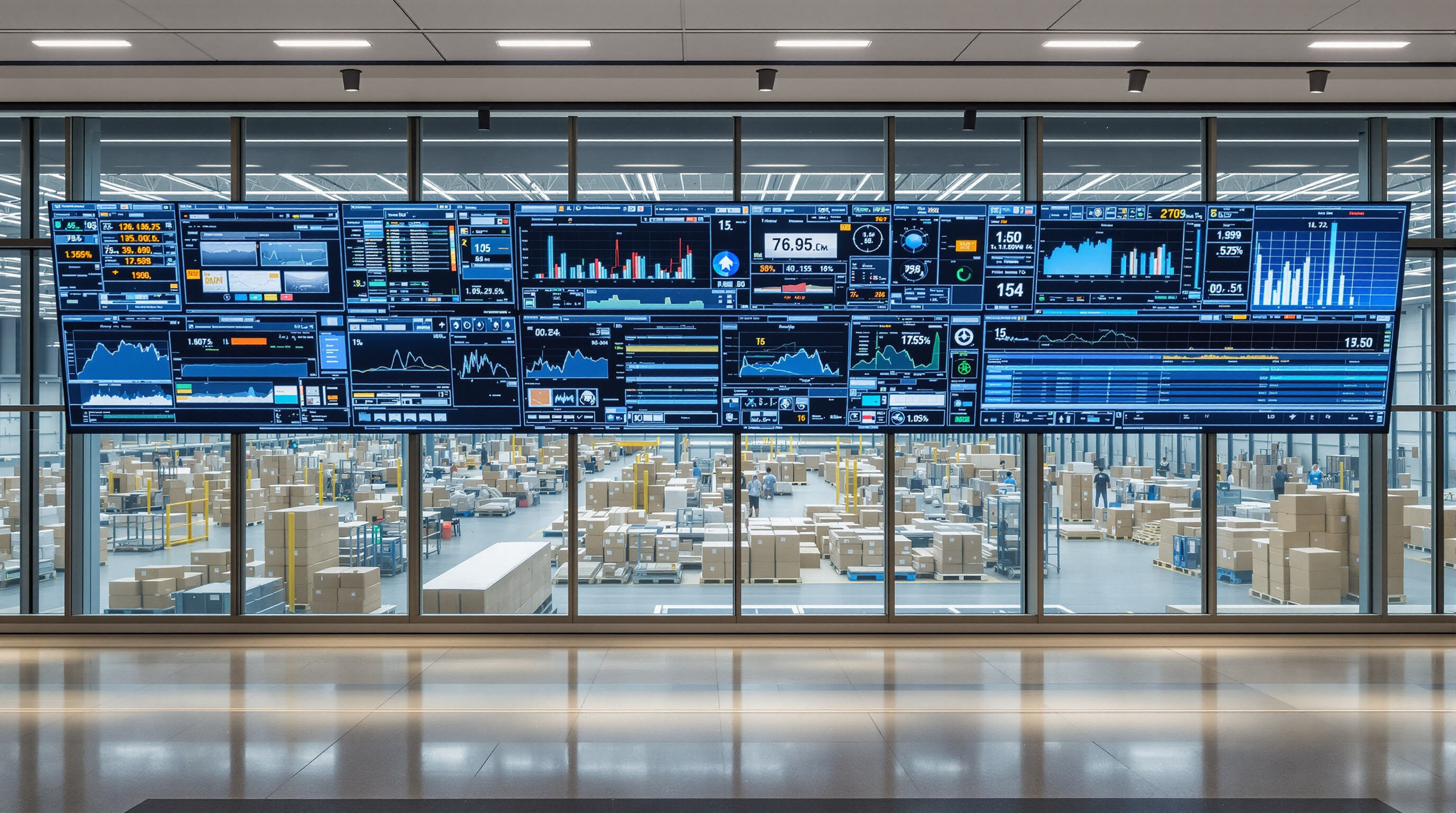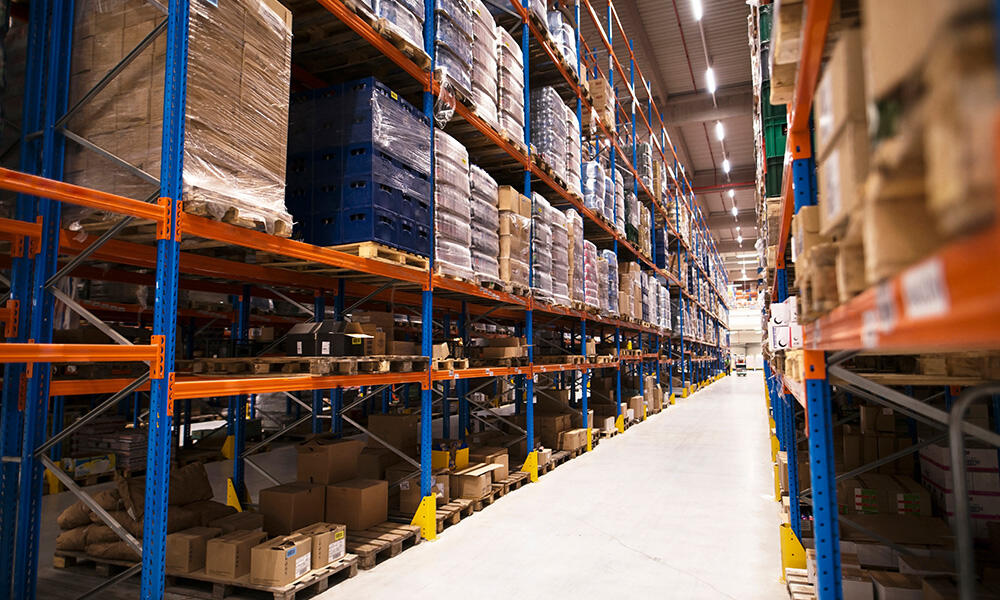From Warehousing to Strategic Growth: The Evolving Role of 3PL United States
How 3PLs Contribute to Business Growth Beyond Warehousing
The 3PL landscape in the US has really transformed over recent years, becoming something much more than just logistics support. A whopping 89 percent of businesses say they've seen better operational flexibility thanks to things like real time inventory tracking and cross docking, according to research from the Ponemon Institute back in 2023. Top tier partners are now offering much more strategic benefits too. They help with predicting demand spikes, switching to greener packaging options, and even using AI to optimize delivery routes. All this adds up to real savings for brands, cutting down fulfillment expenses by about $3.78 per order while still allowing them to grow without breaking a sweat. The latest Market Analysis on US logistics partnerships from 2024 shows another compelling stat: companies that work with integrated 3PL services process orders to cash 19% quicker compared to firms stuck managing everything internally.
The Evolution of 3PL From Tactical Vendor to Strategic Growth Enabler
U.S. supply chains are undergoing a major transformation as companies move away from purely cost-driven warehousing approaches toward more collaborative strategies. Leading third-party logistics providers now rely heavily on predictive analytics tools that help them manage inventory turnover more effectively while adjusting their warehouse setups in real time. These adjustments have resulted in significant reductions in excess stock costs, with many companies reporting around a 32% drop each year. The financial impact is substantial too. Businesses can take those savings, often exceeding $1.2 million annually, and invest them back into areas like product development, brand building efforts, and improving how customers interact with their operations. What was once seen as just another operational expense is now becoming a key differentiator for companies looking to gain ground in competitive markets.
Debunking the Myth: Are 3PLs Truly Strategic or Just Cost-Saving Tools?
Cost savings still matter, but most businesses these days view third-party logistics partnerships as something bigger than that. According to recent data from the Council of Supply Chain Management Professionals (2023), around 74% of companies consider these relationships crucial for expanding into new markets. When working closely with logistics providers, businesses gain access to expansion plans for different regions, ways to optimize customs refunds, and better approaches for selling through multiple channels online. All this becomes increasingly important as cross-border e-commerce grows at nearly 18.4% each year. What's really changed though is how logistics affects customer happiness. Tracking systems that let customers follow their orders have boosted satisfaction rates by about 41%. These days, good logistics isn't just another expense on the balance sheet anymore it plays a major role in keeping customers coming back.
Scaling with Confidence: Flexibility and Responsiveness in Peak and Growth Periods

Handling Demand Fluctuations Through Scalable 3PL United States Networks
Today's third party logistics companies in the US are setting up shop all over the map with multiple fulfillment centers and constantly shifting carrier partnerships. This helps them handle those unpredictable spikes in customer demand without breaking a sweat. According to some research from Gartner last year, companies working with these multi location networks saw about 38 fewer instances where products were out of stock during busy periods than those stuck with just one warehouse. The real advantage comes from having options spread across different regions. When something goes wrong somewhere, like bad weather hits a particular area or suppliers run late, these logistics firms can quickly switch things around and keep operations running smoothly most of the time.
Adapting to Seasonal Spikes and Rapid Growth Without Operational Strain
Working with third party logistics companies helps businesses avoid the headaches of owning physical infrastructure since these partners offer flexible payment options based on actual usage. Take what happened last holiday season for instance. One athletic wear company needed to boost their processing power during peak shopping times. They managed to increase capacity by around 400 percent within just eight weeks thanks to temporary workers provided by their 3PL partner. The best part? No need to hire anyone permanently or sign long term lease agreements. When companies expand into unfamiliar territories, this kind of flexibility becomes absolutely essential. Market predictions tend to be off by more than a quarter sometimes, so having adaptable solutions ready makes all the difference between success and costly mistakes down the road.
Case Study: E-commerce Brand Scales 300% During Peak Season With 3PL Support
A skincare startup achieved $2.7M in Black Friday sales—tripling its previous record—by leveraging its 3PL partner’s:
- Pre-negotiated parcel rate discounts with major carriers
- AI-powered inventory positioning across three strategic U.S. hubs
- 24/7 temporary staffing pool for same-day processing
The partnership avoided $180k in potential overtime costs and prevented the 14% shipment delays common in self-managed operations.
Data-Driven Freight Optimization via Dynamic 3PL Logistics Networks
Top companies are now mixing live carrier performance numbers with machine learning to automatically adjust shipping options. A big furniture store recently managed to slash their LTL freight expenses by about 22 percent, all while keeping deliveries on time around 98.6% of the time last quarter. Looking at roughly 12 million shipments each month allows these 3PL algorithm systems to spot potential delivery problems as much as eight days sooner compared to old school approaches according to Logistics Management from earlier this year.
Accelerating Market Expansion Through 3PL United States Network Reach
Enabling Faster Regional and National Market Entry With 3PL Infrastructure
The best third-party logistics partners can cut down time to enter new markets by as much as two thirds thanks to their established network across nearly every state in America. Instead of spending those long 12 to 18 months building everything from scratch, businesses just tap into ready made warehouse locations and well connected transport routes. A recent study from the Logistics Tech Report shows something interesting too. Companies that work with these US based 3PL networks get their products out about 40 percent quicker when expanding into fresh territories than those trying to handle it all themselves. Makes sense really when thinking about how much groundwork gets done already.
Supporting U.S. Geographic Expansion and Global Readiness Through Strategic Hubs
Major 3PLs position 87% of their domestic fulfillment centers within 50 miles of interstate highway junctions, enabling same-day shipping to 90% of the U.S. population. These hubs are also aligned with global trade flows—62% connect directly to international ports—giving manufacturers seamless domestic and export capabilities without added overhead.
Trend: Accelerated Rollouts Using 3PL Hub-and-Spoke Distribution Models
Recent logistics data shows a 214% increase in hub-and-spoke adoption since 2022, driven by its ability to reduce last-mile costs by 30% (Supply Chain Quarterly, 2023). This model combines centralized inventory management at major 3PL hubs with hyper-local satellite centers, allowing brands to test new markets with 35% lower risk than traditional expansion.
Technology as a Catalyst: Real-Time Visibility and Integration via 3PL Partners

Accessing Advanced Logistics Tech (WMS, TMS, Real-Time Tracking) Through 3PL United States Partners
Top 3PL providers across the US are making high-end tools available to smaller businesses too. Think about Warehouse Management Systems (WMS), Transportation Management Systems (TMS), and those fancy IoT tracking platforms that big companies used to have all to themselves. These tech solutions let businesses automatically check their inventory counts, plan better delivery routes, and watch shipments move in real time something that was previously only possible for Fortune 500 giants. According to research from Inbound Logistics in 2023, nearly 8 out of 10 shippers now look specifically for 3PL partners with complete technology integration. Why? Because when systems don't work together properly, companies end up losing around $1.2 million each year due to all sorts of shipping delays. For mid-sized brands, going with third-party logistics means skipping those expensive software licenses that would otherwise cost over half a million dollars. Plus they get access to smart analytics that help predict what customers will want next and how well different carriers actually perform in practice.
Achieving End-to-End Supply Chain Visibility Without Capital Investment
When third-party logistics gets properly integrated into business operations, it basically connects all those separate systems - ERP, online stores, shipping networks - creating one big picture view without needing expensive new hardware or software investments. These cloud based control centers pull information from almost every corner of the supply chain network, covering everything from raw material providers right down to local delivery trucks, which cuts down on the need for people to manually track shipments by around 40%. The real value comes when companies can spot problems fast, like when cargo gets stuck at customs or warehouses start backing up with inventory. And here's something important: businesses using API driven platforms can expand their monitoring capabilities as needed instead of paying through the nose for custom built solutions. We're talking about saving roughly $740,000 each year according to research from Ponemon Institute back in 2023.
Overcoming the Industry Paradox: High-Tech Tools vs. Inconsistent Data Sharing
Around 87 percent of third-party logistics companies now have some sort of AI tool for their operations, but when it comes to sharing actual raw supply chain information, that number drops down to just 34%. This missing piece really gets in the way of good partnership between businesses. Some progressive logistics firms are tackling this issue by setting up secure data storage systems protected through blockchain technology. These systems keep trade secrets safe while still letting everyone track important performance metrics as they happen. Brands can rest assured their confidential information stays protected, yet still let these logistics partners work smarter. They use machine learning algorithms to find better shipping paths, figure out where to stock products ahead of time, and manage workforce needs more efficiently across different locations.
Building a Resilient and Efficient Supply Chain with 3PL Collaboration
Enhancing Supply Chain Efficiency and Reducing Lead Times by Up to 40%
Strategic 3PL partnerships boost efficiency through integrated inventory management and optimized transportation. Using predictive analytics and automation, businesses achieve 18–40% faster order fulfillment compared to in-house models. This agility supports leaner inventories and frees resources for innovation and customer-centric initiatives.
Improving Responsiveness and Agility Through Shipper-3PL Partnerships
Dynamic collaboration enables rapid adjustments to delivery schedules, shipment routing, and warehouse capacity. A 2023 Council of Supply Chain Management Professionals (CSCMP) report found that brands using real-time 3PL data integration reduced stockouts by 32% during supply disruptions.
Strengthening Supply Chain Resilience in Volatile Markets
3PL networks build resilience through distributed warehousing and multi-carrier partnerships. During the 2022 port congestion crisis, companies using regional 3PL hubs maintained 89% on-time delivery rates, far exceeding the 54% achieved by those relying on single-channel logistics.
The Role of 3PL United States Providers in Risk Mitigation and Continuity Planning
Leading U.S. 3PLs offer scenario modeling tools that identify vulnerabilities across procurement, production, and distribution. By implementing proactive contingency plans—such as alternate sourcing routes and emergency inventory protocols—they help businesses reduce annual supply chain downtime costs by $740k (Ponemon Institute, 2023).
FAQ Section
What is 3PL and how does it differ from traditional logistics?
3PL, or third-party logistics, involves outsourcing logistics operations like warehousing, transportation, and distribution to specialized providers. Unlike traditional logistics that may be managed in-house, 3PL offers more flexibility, advanced technology, and scalability.
How do 3PL services improve business efficiency?
3PL services enhance business efficiency by utilizing predictive analytics, real-time inventory tracking, and flexible fulfillment options, reducing lead times and operating costs. They allow businesses to focus on core activities while leveraging logistics expertise.
Are 3PLs only beneficial for large corporations?
No, 3PLs provide benefits to businesses of all sizes. They offer small and mid-sized businesses access to advanced logistics technology without the high capital investment, fostering growth and market expansion opportunities.
What technology do 3PL providers typically offer?
3PL providers typically offer advanced logistics technologies like Warehouse Management Systems (WMS), Transportation Management Systems (TMS), and IoT tracking platforms that enhance operational efficiency and visibility across the supply chain.
Why is data sharing important in 3PL partnerships?
Data sharing in 3PL partnerships allows for seamless integration, transparency, and improved decision-making across the supply chain. It ensures that all parties can respond quickly to changes and optimize logistics processes efficiently.
Table of Contents
- From Warehousing to Strategic Growth: The Evolving Role of 3PL United States
- Scaling with Confidence: Flexibility and Responsiveness in Peak and Growth Periods
- Accelerating Market Expansion Through 3PL United States Network Reach
- Technology as a Catalyst: Real-Time Visibility and Integration via 3PL Partners
- Building a Resilient and Efficient Supply Chain with 3PL Collaboration
- FAQ Section

